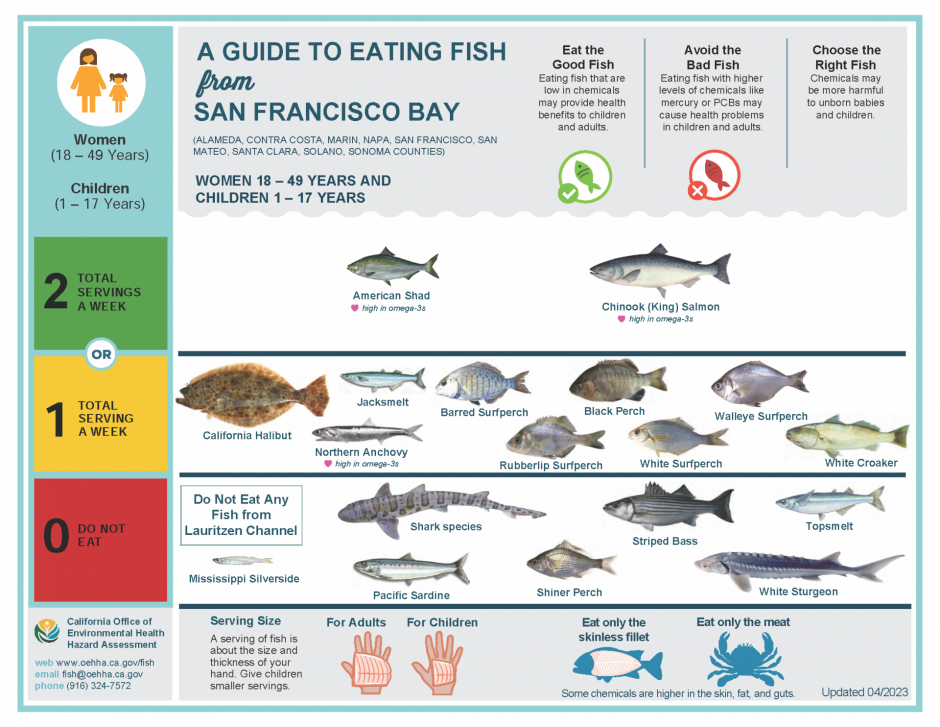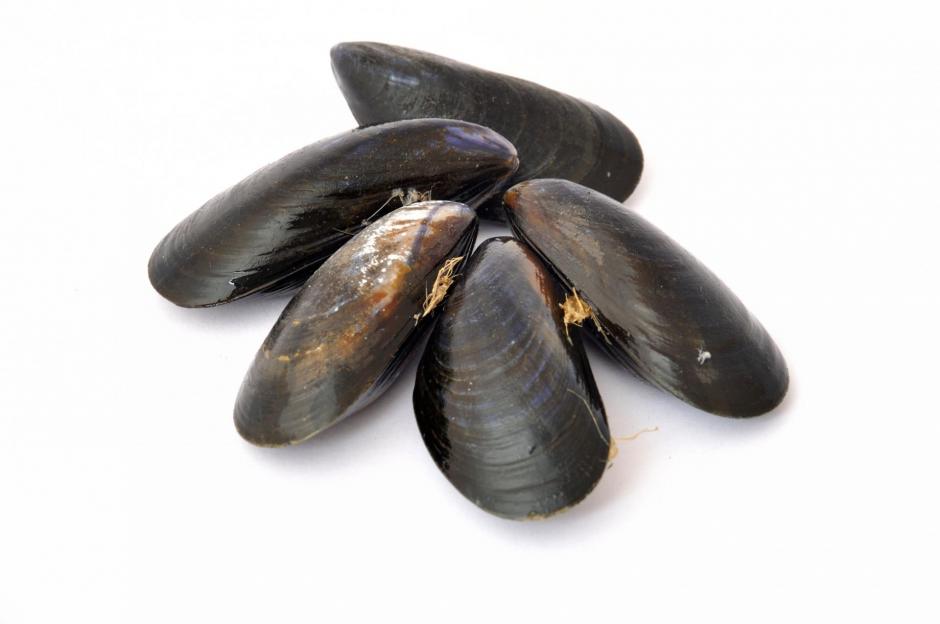Safe-to-Eat Fish from the San Francisco Bay
Fish Smart Program
Promoting Guidelines for Safe-to-Eat Fish from the San Francisco Bay and Pacific Ocean
We are fortunate to have access to fresh seafood from the San Francisco Bay and Pacific Ocean. Many fish in the bay and ocean are healthy and safe to eat, but some fish have high levels of toxins that can harm your health and are NOT safe to eat. Below are guides to help you choose the safest fish for you and your loved ones to consume. You can also sign up for guideline updates.
All Languages for San Francisco Bay Guides
English | Español | 中文 | Tagalog | tiếng Việt
All Languages for California Coast Guides
English | Español | 中文 | Tagalog | tiếng Việt
Guides to Eating Fish from the San Francisco Bay
For more information about eating fish from the San Francisco Bay, click here.
English | Español | 中文 | Tagalog | tiếng Việt
Guides to Eating Fish from the California Coast
For more information about eating fish from the California Coast click here.
English | Español | 中文 | Tagalog | tiếng Việt
Why Choose “Safe-to-Eat” Fish?
Why eat some fish and not others? Fish are an excellent source of protein and are low in saturated fats. They also contain omega-3s that can reduce your risk of heart disease and improve brain development in children and unborn babies. However, some fish have high levels of polychlorinated biphenyls (PCBs) and mercury. PCBs have been linked to cancer and mercury can harm developing children or unborn babies’ brains. Younger women are also vulnerable to these health risks.
How do chemicals build up in fish? Where fish swim and the foods they eat determine how many chemicals may be in their bodies. Over time, predatory fish and fish that are larger and older will have more chemicals in their bodies. You can read more about bioaccumulation and biomagnification here.
How Can the Fishing Community Stay Informed About the Fish Smart Program?
Environmental Health Services posts Fish Smart signs at fishing locations throughout the county to promote important consumption guidelines of safe-to-eat fish. Know a fishing spot that could use a sign? Email the Fish Smart Program Coordinator, Emilie Dirck, at edirck@smcgov.org.
Get involved in spreading awareness:
- Join our email list with guideline updates.
- Tell us about your fishing habits by taking this survey.
- Display or hand out flyers at your organization or business. Request flyers in a variety of languages from edirck@smcgov.org.
- Sign up for an educational presentation for an adult or youth organization (see next section for details).
- Request a health care provider training (see next section for details).
Free Demonstrations and Lessons are Available to the Public
We have a dedicated staff member who will present to your health care group or adult or youth organization about the Fish Smart Program and safe-to-eat-fish. You can request an informational 1:1 or group meeting here or email Emilie Dirck, the program coordinator, at edirck@smcgov.org to learn more.
What About Shellfish from the Pacific Ocean?
You can harvest mussels along the Pacific coastline during certain seasons. From May until October, mussels along the coast can make you very sick, so do not eat sport-harvested mussels during these months. Learn more by visiting our shellfish safety page or calling the biotoxin hotline at 1-800-553-4133.
Other types of bivalve shellfish, including oysters, clams, and commercially harvested mussels from certified companies, are not included in the quarantine. Visit the California Department of Public Health’s website for more information.
Additional Resources
- For statewide fish advisories for all bodies of water, visit California Environmental Protection Agency, Office of Environmental Health Hazard Assessment (OEHHA)’s website or watch their informational video.
- For an interactive map of local fish contaminant data, visit San Francisco Estuary Institute and the Aquatic Science Center’s Safe to Eat Portal.
- To make healthy seafood choices for you, your business, and the ocean, visit Monterey Bay Aquarium’s Seafood Watch Program.
- To keep wildlife safe and litter out of our water bodies, find a local fishing line recycling center.

